
Issue #: 152
Published: March / April 2017
- Price per issue - digital : 5.00€Digital magazine
- Price per issue - print : 7.00€Print magazine
- Access to Multihulls World digital archives Digital archives
It’s time to head east for Olivier and family on board Jangada as they relate their journey around the world for us. Today it’s a stopover in Vanuatu!
It’s a strange feeling when during a westward trip around the world, you suddenly start to head back east for a few dozen miles. Upon leaving the Loyalty Islands, we set a course for… Panama! However, to take in Vanuatu while sailing around this Melanesian archipelago was certainly a good idea. It hadn’t been part of our initial world tour program, but then sometimes when travelling it’s worth letting our senses blow us off course from time to time…
Barbara’s Diary: "It had hardly been 24 hours since we had left the Loyalty Islands, and here we were sailing into Port Resolution Bay on the island of Tanna. The contrast with the rich and prosperous New Caledonia was striking… There is a good feeling between the locals and us, with no excessive displays or welcome. Here, mutual respect is the rule, and a certain reserve is expected. We barter fish caught out at sea and children’s books for fruit and vegetables from their gardens. Village life seems to be so solidly entrenched that the arrival of passing yachts does not alter their ancestral way of doing things. Tanna’s inhabitants must have their struggles and problems like us. However, observing their way of life underlines just how much we have lost in terms of the solidarity of living in a close community. The strength and naturalness of their community is wonderful to see. It’s one of the great things about travelling: getting the chance to discover the richness of other peoples while understanding our own failings”
Jangada at anchor in Port Resolution, island of Tanna, Vanuatu archipelago…
The archipelago was renamed Vanuatu in 1980, after becoming independent. Previously, Vanuatu had been under a joint Anglo-French administration. At that time it was known as the “condominium” of the New Hebrides. The great English explorer, James Cook came this way of course (in 1774 on board “Resolution” during his second round the world voyage)… Situated a few hundred kilometers to the north-east of New Caledonia, on the edge of the Coral Sea, the Vanuatu archipelago is made up of a dozen or so large islands (Espiritu Santo, Malekula, Efaté, Erromango, Tanna etc.) and several dozen smaller islands, which together form a kind of Y-shape. The islands are unfortunate enough to be situated on the famous Pacific “Ring Of Fire”, which suffers from lots of volcanic and seismic activity. It is also on the trajectory of certain hurricanes, such as the extremely violent “Pam”, which crossed the islands in May 2015 with winds of 270kmh…
The ancestral isolation between the islands themselves and of the archipelago with the rest of the world, which is still the case today, has led to the development of around 120 languages and dialects, which is a record! The islanders use English and French to make themselves understood, the two languages inherited from the colonial powers, (although which language depends on the village you are in), as well as “Bislama”, the only dialect which is understood on all of the islands.
Our first contact in Vanuatu was called Stanley. He came out to greet us on a frail craft when we arrived at our mooring in Port Resolution Bay. Stanley was the younger brother of Johnson, the village chief. It appeared as though the tribe had mandated him with the job of coming out to meet us. With his smile and reserved manner, we warmed to him immediately. We made for land with him in the dinghy, slaloming between the rocks which stick out from the shoreline. We pulled the craft up onto the beach and followed Stanley along the small track which led through the trees. The village, hidden by all the foliage, had not been visible from our boat. Each extended family occupied a part of the village with a certain number of plots. When the family grew (births, marriages), a new plot would be built on. Wooden framework, pandanus cladding and matting, and coconut leaf roofs. These basic habitations are arranged around a central hall where the women prepared the meals. As is often the case on isolated islands, any recuperated items (usually the result of a barter) will be used for anything and everything. On one of the plots, the wonderful deck hatch from a yacht that had been wrecked in the bay, served as a window. One could imagine that the watertightness would be exemplary! One day a week is given over to the tribe’s collective work. This is a custom. On other days, the Ni-Vans (Vanuatu’s inhabitants) look after their own gardens. During our stay the collective work involved cutting back any growth on the large central esplanade, using machetes and sickles.
Stanley, a Ni-van from Tanna, came out to welcome us at our Port Resolution anchorage.
All the villagers had to join in: children, adults and the elders, and all are very handy with a machete. There are lots of children in the village, and Barbara points out to Marin and Adélie how happy they seem despite not having many possessions. It’s interesting to see that from the earliest age they are looked after by a big sister, mother, aunt or grandmother. As they grow up they go around in groups, running, fishing, having fun. From their birth to their death, they are never alone, but always surrounded by people. The village school here uses the English language. In others it will be French. After school, the children run down to the beach to for a swim in the waters of the Pacific, followed by a game of soccer. Marin joined them at the end of the afternoon, and was really happy to have a kick around in the late afternoon sun. Throughout our journey, we noticed that the fact that we were sailing our own boat, and that we had our children with us, were two factors which worked in our favor. We weren’t considered to be holidaying tourists, but were a travelling family. There is a subtle difference.
Stanley showed us his garden. Each family has several gardens around the village. The main products that they cultivate are taro root, yam (a sacred vegetable for Melanesians), manioc, sweetcorn and sugar cane. Lemons, bananas, papaya, guava and coconut are abundant. Very little of the agricultural production is commercialized. Just a bit of copra, onions, yams and some fruit… Tanna coffee is the main export. Although the soil is fertile, the majority of the agriculture is reserved for the tribal gardens. In this archipelago, where there are few maritime links, the priority is self-sufficiency.
The day after our arrival on Tanna, we had to officialize our arrival in Vanuatu. The customs and immigration offices are both situated at Lenakel, a small, exposed port on the other side of the island. To get there, we use one of the three 4x4 vehicles which belong to the village. What a trip! The muddy track which goes to Lenakel is in very bad condition. It took us 3 hours to reach Tanna’s main town. Each tribe has to look after the part of the road which goes through its territory. We shared a flatbed truck with a group of fun, smiling Ni-Vans. We carried out all the formalities in the decrepit offices and then headed for the big market in Lenakel, which is held out in the open around an enormous banana tree with an aerial root system. The women wore brightly colored missionary robes. We had to quickly get back on the track to be able to reach Port Resolution before nightfall. On the way back, the truck made regular stops at the roadside stalls where the passengers bought fruit and vegetables, and the famous “kava” (the root of a kind of pepper plant which, once prepared, produces a euphoric drink which is used in rituals).
Village plots in Port Resolution, Tanna island.
Barbara’s Diary :
"After our time in Tanna, we headed further north to the island of Erromango. In the 1820s, after the discovery of Sandalwood on Erromango, many (often unscrupulous merchants), were attracted there. Their presence led to many conflicts with the indigenous population. Following hot on the heels of the sandalwood merchants, Anglican missionaries arrived on the island. Some had tragic ends, such as the Reverends Williams and Harris, who were killed, cooked, seasoned and eaten by the population of Dillon’s Bay on Erromango. Of course, it was in front of this village that Olivier decided to anchor the boat…”
But I wasn’t there to convert them. To be able to disembark at Dillon’s Island, you need to get across the small river along which the village is built. The weather was gray and wet, but that didn’t stop the locals coming out to greet us. We, in turn, greeted these smiling Melanesians. With Marin we had caught two large tuna between Tanna and Erromango. We offered one to the chief as we disembarked, and he shared it out among the tribe. We got to know Joseph, who spoke good French. Very dark-skinned, as are all the Ni-van, he offered to show us the village. The children were having fun fishing, while the women were washing clothes in the stream which ran down from the mountains. The vegetation was very dense. Joseph showed us the school, and then his wife who was the “headmistress”. The next day we dropped off some children’s books and some school manuals. We get on well with Joseph. He was open and kind.
An on board game of hano between Adélie and Joseph, a Ni-Van from Erromango…
Joseph was 51 years old, and for some months had been suffering with terrible toothache. He treats the pain with “kava”, but would like to get two of his four remaining stumps removed. In Vanuatu, the inter-island connections are few and far between however, and the islanders often find themselves isolated. The islands were apparently better served pre-independence. However, the young independent state lacked funds. Joseph asked if he could take advantage of our crossing to Port Vila. Jonas, the village chief had made two slings which he offered to our children to thank us. During the crossing, Joseph helped Marin and Adélie put them together. Uniquely, since our departure from La Rochelle, our crossing from Erromango to Efate was done under motor, on a millpond. 13 hours under motor! Despite the captain’s complaints, the kids are ecstatic, as they are able to play games of hano on the trampoline with Joseph. We taught our friend to play this game which we ourselves had learnt in the Loyalty Islands. The idea is to slide hano beans along the trampoline, and to try and position them as close as possible to a transverse line. Although he was a beginner, Joseph soon beat us all. The kids were amazed by Joseph’s manual dexterity, which soon earned him the title of Pacific Hano Champion!
At Port Vila, Joseph stayed on board to sleep. He should have stayed with a niece, but had not had the chance to warn her. On the Sunday morning, we went to mass in the cathedral. This was said in an incredible mixture of English, French and Bislama. The women sat on the left in their missionary dresses, and the men on the right in their Sunday best.
During our stopover, each evening at nightfall, we met up with Joseph to drink kava together. Joseph insisted on sharing this ritual with me. Timothée, my eldest son who joined us later on during his holidays joined in too. Marin was too young. Joseph has two grown up sons, one studying in Tonga and the other in Fiji. There is no university in Vanuatu. To carry on your studies, you need to leave the country, which means that often you won’t come back. Joseph hasn’t seen either of his sons for 3 years. The cost of their studies is expensive, as are the airline tickets. Joseph works a few hectares of sandalwood on Erromango to finance his sons’ studies. Our friend is confident that his sons will one day come back to Erromango. This is their land, and in Melanesian culture, the attachment to one’s land and family is visceral. He has no worries for his old age, as his sons will look after him as he has looked after his parents…
On the last day of our stopover at Port Vila, Joseph came on board for lunch. We were sad to leave him. Joseph knows that it will be a long time before we ever see him again, if ever. We try to keep up our spirits, but there is a sadness which hangs over us. Joseph tells the children that he hopes that they will come back one day to see him on his island. Never forget his invitation kids!
The market in Port-Vila, Vanuatu’s capital, on the island of Efate…
… the ritual consumption of kava ! Kava… as the sun sets over the Vanuatu archipelago, you can see in all the island villages, men heading towards the nakamal, (village hall), as if all following a secret instinct. They are going there to drink kava. In the villages, the ritual is unchanging, with fixed rules apart from a few variants, especially when it comes to preparing the ritual brew. In Port Vila, the capital, although the custom is changing slightly, men do still desert the streets at nightfall. They head up to the higher, darker parts of town. They are going to the mysterious kava bars. It is the traditional male drink of the Vanuatu archipelago. In village life it has almost become part of the social life. It is shrouded in mystery and legend. The main legend is as follows :
"A very long time ago, night didn’t follow day. It didn’t exist yet. In those days men drank a red kava. When they were tired, they fell asleep in the sunshine. The god Kalpapen decided to give them the real kava. He then sent them a cricket to sing in the evening, and a cockerel to crow in the morning. He then spiked the sun with a reed to chase it away, and night fell on the islands. Kalpapen had created the changeover between night and day, and he asked the men to celebrate this each evening, by getting together and drinking kava ».
At Murder River, Adélie and the sling offered to her by Jonas, the village chief from Dillon’s Bay…
Kava is a shrub which is native to Vanuatu (Piper Methysticum, from the family of pepper plants). It grows to a height of 1.50 to 2 meters. The roots are cut up into small pieces, shredded and then soaked in water. After being filtered, you are left with a kind of grey drink with a very particular taste. It is so pungent and earthy that the initial reflex, particularly for westerners, is to hate it! In Tanna, the roots are usually chewed rather than mashed, and then spat out into banana leaves… Having been left out in the sun for a few hours, the paste is mixed with water and then filtered. You will understand therefore, that I preferred to wait until we were in Etafe and Port Vila before our friend Joseph from Erromango initiated me one evening into the kava ritual, in the dark, upper town. Kava contains anxiolytic and anaesthetic properties. In high doses, kava can be hypnotic. However, even though the Ni-Van wouldn’t miss their daily kava rendez-vous for anything, they do not seem to abuse it. Two or three shells (half a coconut shell, or bowl) seems to be the usual amount that is drunk. Above these quantities, the anaesthetic effect of kava tends to have more of a soporific effect. Consuming kava is not thought to induce problems of addiction or dependency. The sensations appear a few minutes after the absorption of the kava, and disappear completely around 10 hours later, coinciding with the next day’s waking hour. In the west, kava is used in pharmacology in very small amounts, as a tea to combat stress, anxiety and depression. General availability is however illegal in many countries including France, mainly because of a risk of hepatitis. In Vanuatu, sharing kava is a symbol of friendship and peace between men. Out of respect for the custom, and the calm and serenity of the drinking of kava in the villages of Vanuatu, I did not wish to take any photographs when I was invited to take part.
Kava roots before being used. One of Vanuatu’s fundamental rituals…
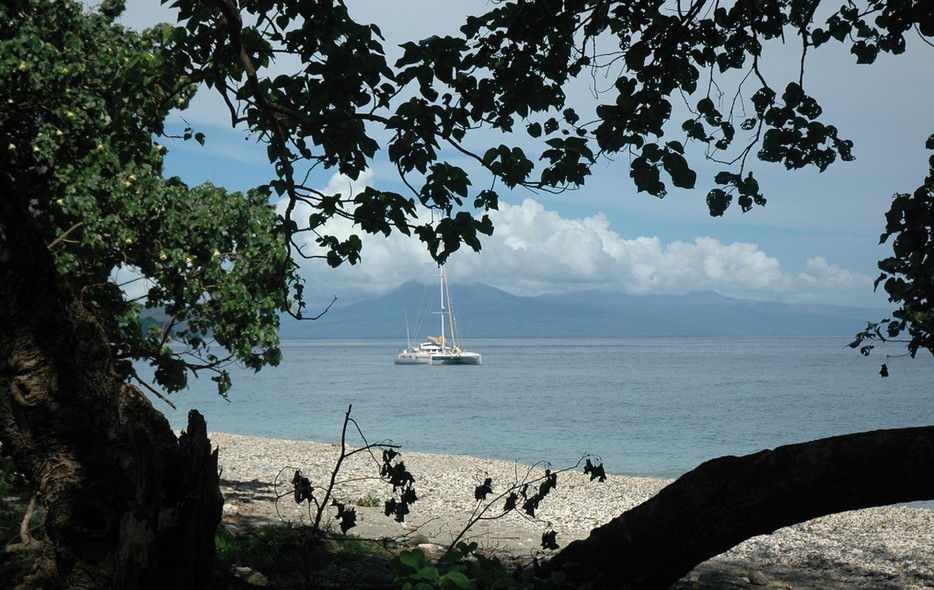
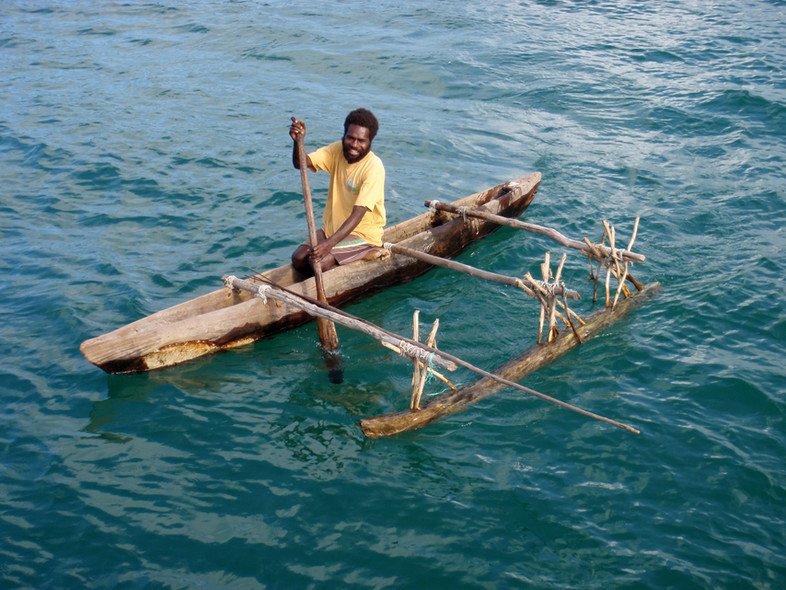
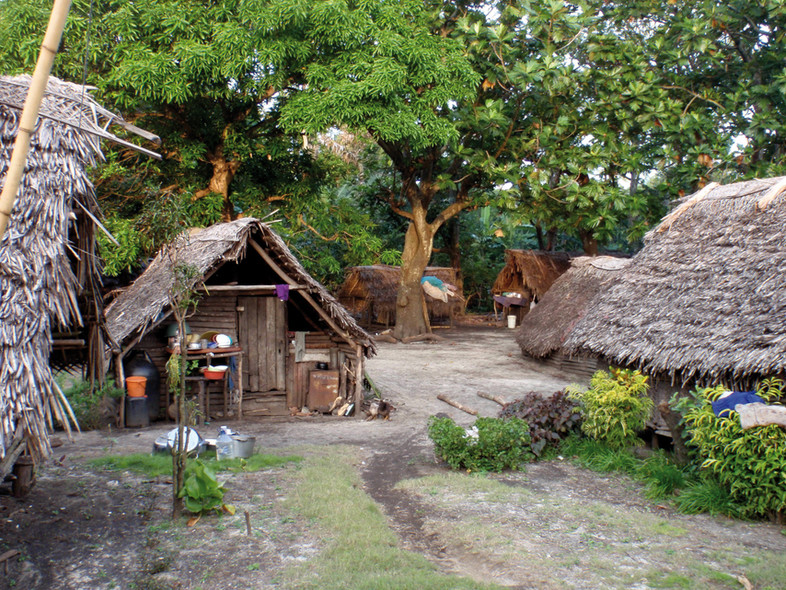
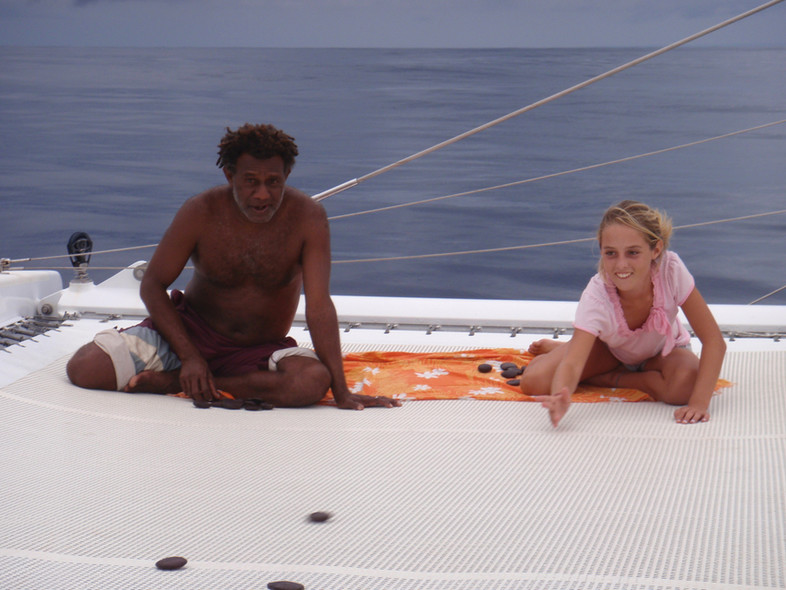
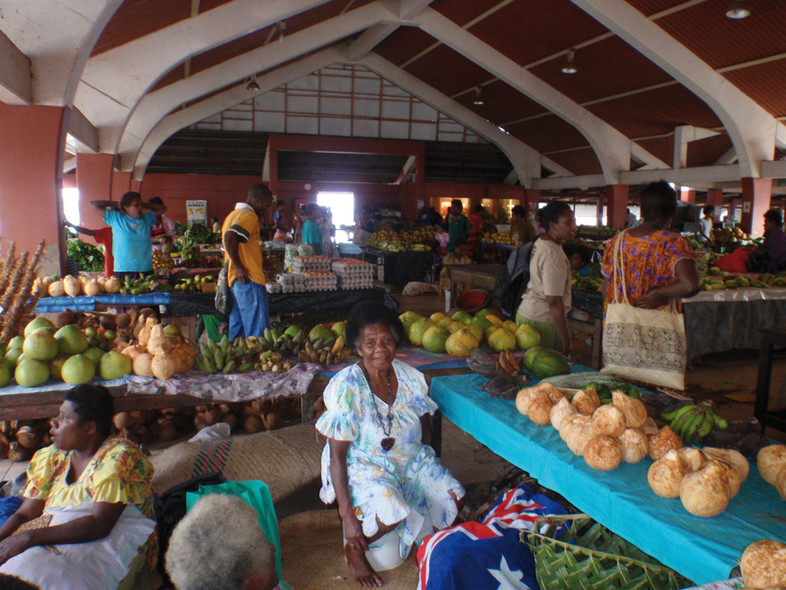
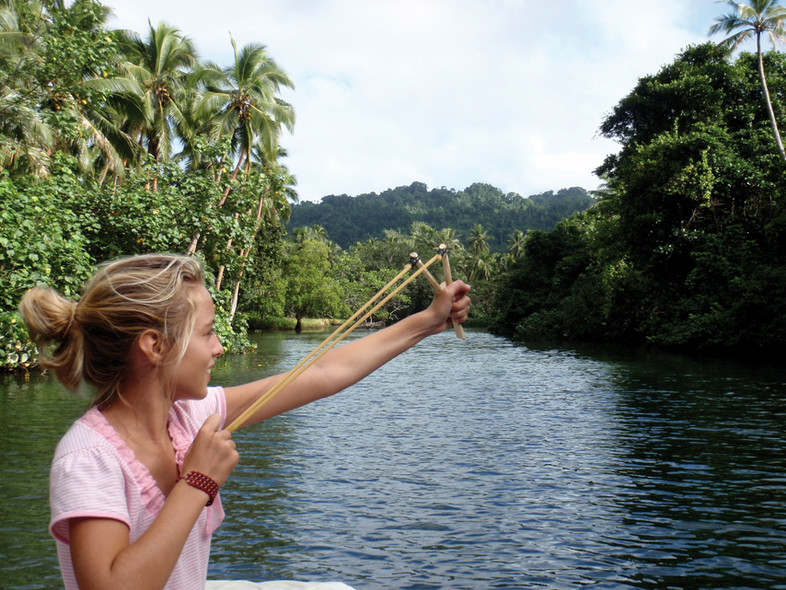
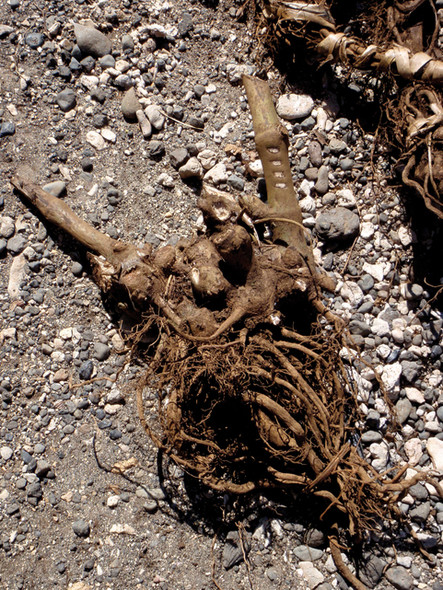
What readers think
Post a comment
No comments to show.